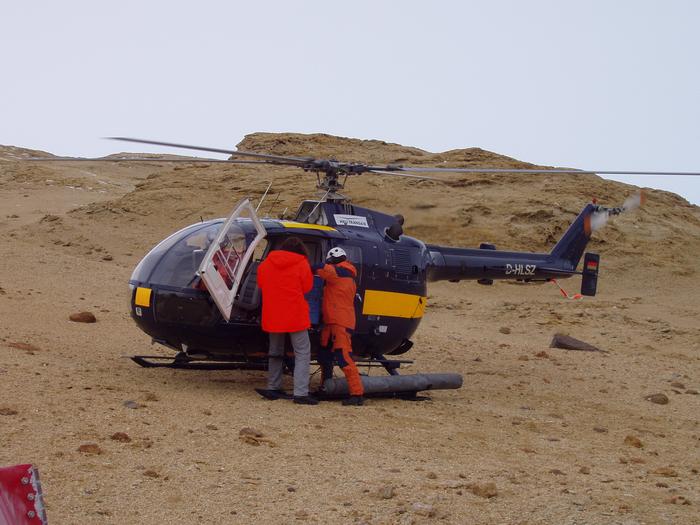In the forbidding expanse of East Antarctica, where frigid winds and nutrient-poor soils dominate the landscape, a groundbreaking study overturns long-held assumptions about microbial life’s resilience and diversity. Recent research conducted in the Larsemann Hills, a particularly austere region in continental Antarctica, unveils a surprisingly complex and abundant microbial ecosystem thriving on weathered glacial debris. This discovery not only reshapes our understanding of biodiversity in extreme environments but also highlights the intricate mutualistic relationships that underpin life’s persistence in places once thought nearly sterile.
For over a century, evolutionary biologists have debated the drivers of life’s diversity. While competition often takes center stage, early thinkers like Peter Kropotkin championed cooperation—or mutualism—as an equally vital force in evolution. Inspired by his observations in the harsh Russian Far East, Kropotkin argued that collaboration among organisms could be instrumental in survival and adaptation. Now, echoing this philosophy, the new research from Antarctica provides compelling molecular evidence that microbial communities cooperate extensively even under the planet’s most extreme conditions.
The study employed high-throughput DNA barcoding to parse the identities and interactions of microorganisms inhabiting soil samples taken along a glacier forefield chronosequence. Samples were meticulously collected at five locations ranging from the glacier’s edge outward, capturing several stages of ecological succession. By differentiating between intracellular DNA (iDNA) from living microbes and extracellular DNA (eDNA) from those long gone, researchers crafted a dynamic map of microbial colonization, extinction, and survival over time. This nuanced approach allowed unprecedented insight into both current ecosystems and their historical legacies preserved in Antarctic soils.
Results revealed a staggering total of 2,829 genetically distinct microbial species, with bacterial diversity outstripping eukaryotic organisms by a factor of more than ten. Remarkably, each sampling distance from the glacier harbored unique species assemblages, highlighting habitat-specific ecological niches influenced by time since deglaciation and soil maturation. The highest diversity of living microbial DNA typically occupied the soil’s upper horizons, where interactions are abundant and environmental conditions, though extreme, are comparatively less severe.
Close to the glacier, pioneer communities dominated by cryophilic fungi were identified. These cold-loving fungi play a foundational role in early soil formation, preparing the substrate for subsequent colonizers by breaking down mineral components and contributing organic matter. By initiating soil development, these fungi set in motion a cascade of biological succession, facilitating increasingly complex microbial assemblages. Their presence emphasizes the layered nature of ecological establishment in a landscape shaped by gradual glacial retreat.
Central to the study’s novelty was the use of network analysis to detect co-occurrence patterns among bacteria and eukaryotic microbes. Repeated, statistically significant associations between taxa suggest functional linkages that go beyond mere coexistence. For example, consistent partnerships emerged between specific green algae and bacteria, hinting at nutrient exchanges that help both parties overcome resource scarcity. Additionally, fungi and actinobacteria were frequently found together, implying metabolic cooperation where fungi degrade organic material to provide carbon substrates utilized by bacteria—a previously underappreciated mutualism.
These microbial consortia appear to represent optimized strategies for survival in conditions characterized by extreme cold, desiccation, and limited nutrients. The tightly knit networks likely facilitate efficient resource cycling and cellular communication, enabling these communities to outperform expectations for productivity and diversity in such inhospitable environments. This discovery challenges earlier conceptions that Antarctic soils were relatively barren and underscores the adaptive ingenuity of microscopic life.
The implications extend beyond Antarctica. Revising the estimates of microbial biodiversity in polar soils reshapes ecological and biogeochemical models that inform our understanding of Earth’s biosphere resilience, particularly under climate change scenarios. If microorganisms can thrive through cooperation in the harshest terrestrial habitats, similar mechanisms might be at play in other extreme environments, including extraterrestrial settings under consideration for astrobiology.
Dr Dirk Wagner, the study’s lead author and a professor affiliated with the GFZ Helmholtz Centre for Geosciences and the University of Potsdam, emphasizes that this research opens new pathways for investigating microbe-microbe interactions experimentally. Controlled microcosm experiments could elucidate the mechanistic basis of the observed mutualisms and verify their roles in nutrient exchange and community stability. Such work would deepen our molecular-level understanding of ecosystem engineering by microorganisms.
The fieldwork was conducted during the ‘ANT-XXIII/9’ expedition aboard the German research icebreaker Polarstern, underscoring the logistical challenges of polar microbiology. Taking soil cores at varying depths—from zero to thirty centimeters—allowed stratigraphic resolution of microbial community structures, revealing vertical heterogeneity and the influence of past environmental changes. Disentangling the living microbial community’s DNA from the echoes of extinct species’ remains through iDNA and eDNA proved essential to reconstructing ecological histories.
This study underscores that Antarctica’s soils, long dismissed as marginal habitats, are dynamic arenas of microbial diversity and evolution. Colonization and subsequent species interactions orchestrate gradual soil ecosystem development as glaciers retreat, transforming barren debris into vibrant microbial landscapes. Understanding these processes provides a critical baseline for assessing the impact of ongoing environmental change on polar microbiomes and, by extension, global ecosystem functions.
In sum, the research delivers a compelling demonstration that microbial life in Antarctica’s Larsemann Hills is far more varied and intricately connected than previously recognized. By spotlighting novel mutualisms between prokaryotic and eukaryotic microbes, the findings herald a paradigm shift in how scientists view survival strategies in extreme ecosystems. The delicate balance of cooperation and competition revealed in this frozen frontier illuminates broader evolutionary narratives and may inspire innovative biotechnological applications that harness microbial networking principles.
Subject of Research: Not applicable
Article Title: From single pioneers to complex pro-and eukaryotic microbial networks in soils along a glacier forefield chronosequence in continental Antarctica (Larsemann Hills, East Antarctica)
News Publication Date: 21-May-2025
Web References:
https://www.frontiersin.org/journals/microbiology/articles/10.3389/fmicb.2025.1576898/full
References:
DOI: 10.3389/fmicb.2025.1576898
Image Credits: Dirk Wagner, GFZ
Keywords: Antarctic microbiology, microbial networks, mutualism, glacier forefield, ecological succession, cryophilic fungi, bacterial diversity, eukaryotes, DNA barcoding, extreme environments, Larsemann Hills, Polarstern expedition
Tags: adaptation strategies in extreme conditions.Antarctic soil biodiversitybiodiversity in harsh climatescooperation in evolutionary biologyglacial debris microbial communitieshigh-throughput DNA barcoding techniquesLarsemann Hills research findingsmicrobial ecosystems in extreme environmentsmolecular evidence of microbial interactionsmutualism in microbial lifenutrient-poor soil ecosystemsresilience of Antarctic microorganisms





